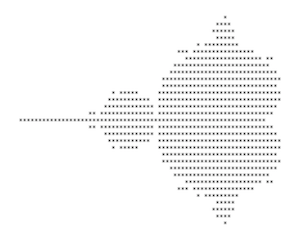 One of my favorite mental challenges, as many regular Grey Matters readers know, is the Knight's Tour. The challenge is, using only the chess knight's L-shaped move, to land on each of the 64 squares once.
One of my favorite mental challenges, as many regular Grey Matters readers know, is the Knight's Tour. The challenge is, using only the chess knight's L-shaped move, to land on each of the 64 squares once.
Mentalist Richard Paddon recently released a download resource titled The Knight's Tour: A Scenic Journey. In this post, I'll take a close look at this new take on a classic feat.
We'll start with a quick peek at Richard Paddon himself performing the Knight's Tour, via the teaser ad:
The Knight's Tour: A Scenic Journey comes as a set of 3 files: A 45-page PDF of the same title, a 16-minute MPEG file of Paddon's performance, and the Knight's Tour Windows application used by Paddon, and programmed by Dave Everett.
In the PDF, right away, the author emphasizes the importance of developing drama in the Knight's Tour presentation. The first parts of the actual instruction, however, focus on developing the path through the board. Much of this part of the book may be familiar to readers of the “Knight's Tour” section of Paul Brook's Chrysalis Of A Polymath. However, Richard Paddon does add some new and helpful notes, such as the section on what he has dubbed “delta values”, which are familiar to those who have programmed a Knight's Tour, but little discussed in the use of performances.
In the next half of the book, Paddon discusses the presentational details. He starts with the benefits of the Knight's Tour, including its uncommon nature, and its huge potential on an emotional and theatrical scale. The thoughts behind the presentations are well laid out. Even if you disagree with any aspect of the presentation as written, you at least have a good starting point of why particular choices were made.
One of the more interesting choices is ending on a selected square, as seen in the above video. As the board empties, the chosen square becomes a more and more important focus, and becomes a natural point of building tension. The PDF winds up with a detailed description of how to use the program.
There are very few weaknesses in this product overall. One of the one that stands out to me as both a programmer and a blogger of mental feats was the choice of the Comic Sans font for the numbering of the board. If you're taking as much care as this author does to make an impact on the audience, there's probably better ways to label your board than a font designed specifically to have a comic-book appearance. On an equally minor note, the lightning in many of the shots of the performance video could be better. The importance of the video is for a more complete understanding of the presentation, so this isn't a huge drawback.
Overall, this is an excellent value for anyone seriously interested in performing the Knight's Tour. The basics of working through the path may be easily accessed in multiple sources, but the depth of knowledge that is presented, as well as the use of multiple media to demonstrate this make this the most complete lessons about all aspects of the Knight's Tour and its proper performance.
It's available for only $9.95 over at Lybrary.com and is a remarkably great value for that money. If the Knight's Tour interests you, Richard Paddon's The Knight's Tour: A Scenic Journey is a must-read.













